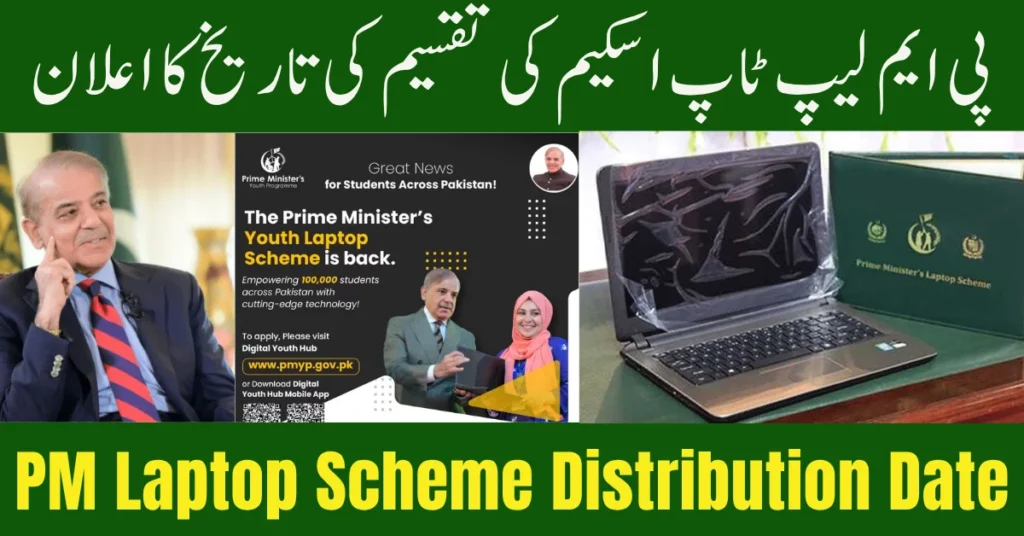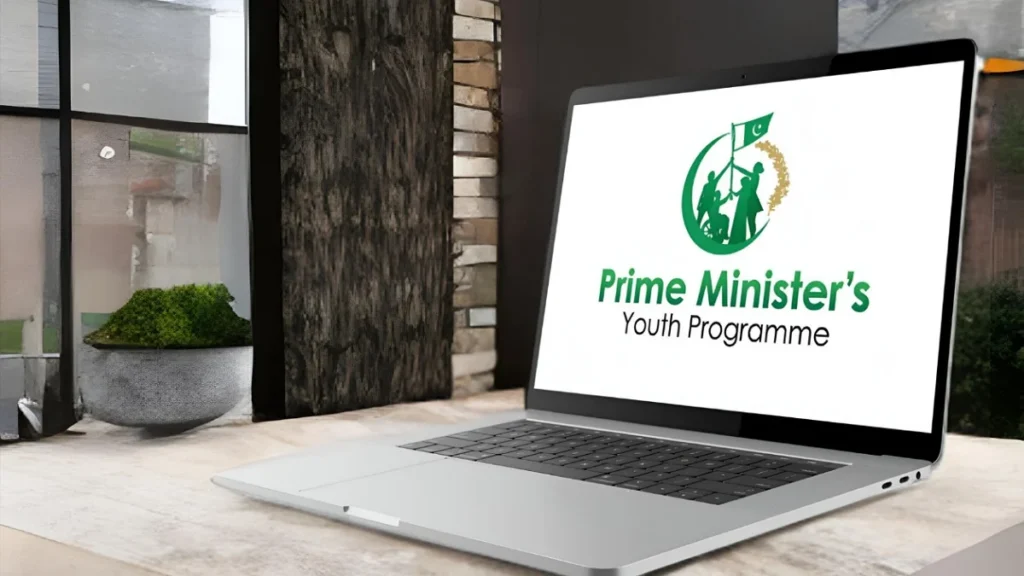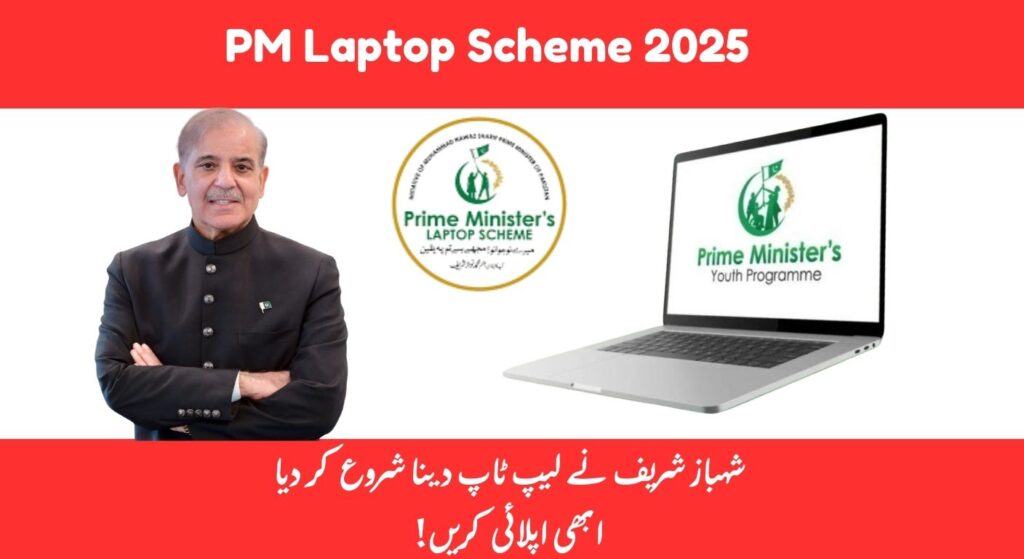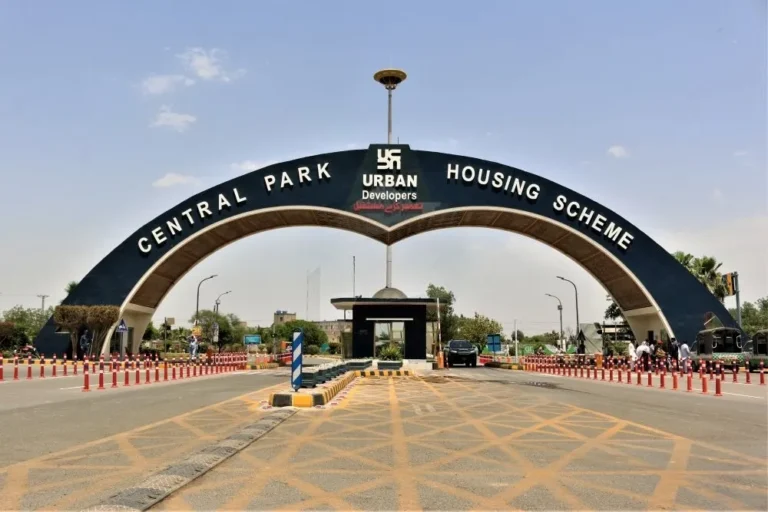PM Laptop Scheme 2025: Government Initiatives
I. Executive Summary
The year 2025 marks a significant renewal of the Pakistani government’s commitment to fostering digital literacy and empowering its youth through two distinct, yet complementary, laptop distribution initiatives. These programs, the federal Prime Minister’s Youth Laptop Scheme (PMYLS) and the provincial CM Punjab Laptop Scheme, are strategically designed to bridge the persistent digital divide, enhance academic excellence, and equip students across the nation with essential technological tools for future success in an increasingly digital world.
The PMYLS, a national endeavor now in its fourth phase, aims to distribute a substantial 100,000 laptops to high-achieving students enrolled in public sector universities throughout Pakistan. The application period for this scheme concluded on June 1, 2025, following an extension from its initial deadline. The distribution of these devices is set to commence after a rigorous process of provisional merit list publication, a subsequent 15-day window for addressing objections, and the finalization of the eligible student roster.
Concurrently, the CM Punjab Laptop Scheme targets students specifically within the province of Punjab, with an ambitious plan to distribute 112,000 laptops, a figure that includes a dedicated quota for minority students. A key distinguishing factor of this provincial initiative is its confirmed distribution start date of October 31, 2025. Both the federal and provincial schemes underscore a profound emphasis on merit-based selection, operational transparency, and a strategic investment in the nation’s intellectual capital, thereby acknowledging the critical role of digital access and proficiency in Pakistan’s long-term development trajectory.
II. Introduction: Bridging the Digital Divide for Pakistan’s Youth
Pakistan’s demographic landscape is characterized by a prominent “youth bulge,” with approximately 63% of its population under the age of 30. This demographic reality presents both immense potential and considerable challenges for national development. Recognizing that a country’s economic progress is intrinsically linked to the strength and capabilities of its intellectual capital, the Government of Pakistan has consistently prioritized investments in programs aimed at harnessing the potential of its young populace. These initiatives seek to reduce unemployment through targeted skill development and to cultivate a vibrant culture of entrepreneurship across various sectors of the economy.
The provision of modern digital tools, particularly laptops, has been a cornerstone of this overarching strategy. The Prime Minister’s Laptop Scheme, initially launched on May 23, 2014, has evolved through several successful phases under the stewardship of the Higher Education Commission (HEC). In previous iterations, such as Phase II, approximately 500,000 laptops were successfully distributed through transparent online systems to students in public sector universities and technical colleges, including those in Federal and FATA regions. The consistent implementation of these schemes highlights a sustained governmental vision to promote outreach to information and communication technologies (ICTs), thereby bridging the digital divide not only within the higher education sector but also across broader communities nationwide.
For the year 2025, these efforts are significantly reinvigorated through two major, yet distinct, initiatives: the federal Prime Minister’s Youth Laptop Scheme (PMYLS), which is now operating in its fourth phase, and the provincial CM Punjab Laptop Scheme. These programs are meticulously designed to bolster digital access, enhance essential skill development, and promote equal opportunities throughout the nation’s educational ecosystem. The government’s continued focus on these schemes reflects a deep understanding that equipping the youth with digital tools is not merely a welfare measure but a strategic imperative for long-term national growth and stability, recognizing digital literacy as foundational for a competitive workforce in the 21st century.

III. Prime Minister’s Youth Laptop Scheme (PMYLS) 2025 (Federal)
A. Scheme Overview and Strategic Objectives
The federal government has officially relaunched the Prime Minister’s Youth Laptop Scheme for 2025, embarking on an ambitious goal to distribute 100,000 laptops to high-achieving students across all provinces of Pakistan. This initiative is not an isolated program but forms a key component of the broader Digital Youth Hub program, which is designed to significantly enhance digital access and foster skill development among the country’s extensive youth population.
The overarching objectives of the PMYLS 2025 are multifaceted and strategically aligned with national development goals. These include strengthening the education sector by integrating modern technology, effectively bridging the digital divide that persists across various regions and socio-economic strata, and promoting equal educational opportunities for all students. Furthermore, the scheme aims to actively support smart education methodologies, facilitate advanced academic research, and stimulate innovation among students. By providing these essential digital tools, the government seeks to empower the next generation, enabling them to acquire future-ready skills and contribute meaningfully to Pakistan’s socio-economic progress.
B. Application and Key Timelines
The application process for the PMYLS 2025 commenced with an initial deadline set for May 20, 2025. Recognizing the significant demand and to ensure broader participation, the registration deadline was subsequently extended to June 1, 2025, providing a renewed opportunity for a greater number of eligible students to apply. This extension was prompted by a reported surge in traffic to the scheme’s official website, indicating widespread interest and a pressing need for digital resources among the student community.
Following the closure of the application window, the selection process transitions through several critical phases designed to ensure fairness and transparency. Initially, a provisional merit list is published, allowing applicants to review their status. A crucial 15-day window is then provided for students to raise any objections or concerns regarding their eligibility or the provisional ranking. This mechanism is vital for addressing potential discrepancies and ensuring that the selection process is robust and accountable. The final merit list is subsequently published only after all submitted objections and concerns have been thoroughly addressed and resolved.
It is important to note that a specific, universal distribution date for the federal PMYLS 2025 has not been announced. The distribution of laptops is inherently contingent upon the successful completion of this multi-stage merit list finalization process and the subsequent logistical arrangements required for large-scale device handover. This process-oriented approach, prioritizing thorough verification and grievance redressal over a fixed timeline, underscores the government’s commitment to ensuring the integrity and equity of the scheme. This structured approach aims to manage public expectations effectively and to minimize complaints, thereby enhancing the overall credibility and impact of the initiative.
C. Eligibility Criteria and Ineligibility
The Prime Minister’s Youth Laptop Scheme 2025 is meticulously designed to target high-achieving students currently enrolled in public sector universities across Pakistan. Eligibility extends to students pursuing a range of academic programs, including PhD, MS/MPhil, Master’s (both 1.5-year and 2-year durations), and Bachelor’s (4-year or 5-year) programs, encompassing both morning and evening shifts.
A fundamental requirement for all applicants is the achievement of a minimum academic performance threshold: a Cumulative Grade Point Average (CGPA) of 2.80 for students under the semester system, or 60% marks for those under the annual examination system. Specific documentation is required for new entrants to higher education; first-year undergraduate students must submit their Higher Secondary School Certificate (HSSC) results, while new MS/PhD entrants are mandated to provide transcripts of their previous degree. The selection process is strictly merit-based, with particular consideration given to high-achieving and financially deserving students. Furthermore, inter-se merit within specific academic departments and programs plays a crucial role in the final selection, ensuring a fair and competitive allocation of devices.
Several categories of applicants are explicitly deemed ineligible for the scheme to ensure that the benefits reach new and deserving candidates:
- Students enrolled in private sector institutions are not eligible.
- Students attending government degree colleges or affiliated colleges are also excluded.
- Individuals who have previously received a laptop under any prior federal or provincial government scheme are disqualified. This measure ensures broader access for new beneficiaries.
- Foreign nationals are generally ineligible, with the sole exception of students from Azad Jammu & Kashmir (AJK).
- Students who have already graduated from their respective programs are not entitled to receive a laptop, irrespective of whether they applied during their period of study.
- Finally, applications that were not submitted through the official Digital Youth Hub portal will not be considered.

Table 2: PMYLS 2025 Eligibility Criteria Summary
This table serves as a concise and consolidated reference for the detailed eligibility requirements of the PMYLS 2025. It is designed to enhance readability and comprehension, allowing prospective applicants and stakeholders to quickly ascertain qualification status without needing to cross-reference multiple textual sources. This structured presentation improves the utility of the report by making complex information readily accessible.
| Program Level | Minimum Academic Requirement | Specific Notes |
| PhD | 2.80 CGPA or 60% marks | Must be currently enrolled; new entrants require previous degree transcripts. |
| MS/MPhil (18 years) | 2.80 CGPA or 60% marks | Must be currently enrolled; new entrants require previous degree transcripts. |
| Master’s (1.5 & 2-year) | 2.80 CGPA or 60% marks | Must be currently enrolled. |
| Bachelor’s (4 or 5-year) | 2.80 CGPA or 60% marks | Must be currently enrolled; first-year undergraduates require HSSC results. |
| Ineligibility | Students from private/affiliated colleges, previous recipients, graduated students, foreign nationals (except AJK), or applications not via official portal. |
Export to Sheets
D. Application Process: A Step-by-Step Guide
The application process for the Prime Minister’s Youth Laptop Scheme 2025 is streamlined and primarily conducted through the official Digital Youth Hub (DYH) platform. This platform is accessible via both a dedicated website (www.pmyp.gov.pk) and a mobile application available for Android and iOS devices. While some reports indicated the website might be inaccessible at certain times, during the active application phase, it was the designated portal for submissions. This dual accessibility via web and mobile app aims to maximize reach and convenience for students across Pakistan, acknowledging varying levels of internet access and device ownership.
The step-by-step application guide is as follows:
- Create an Account: Applicants must first sign up on the Digital Youth Hub platform. This typically involves using university credentials and providing personal details to establish a unique profile.
- Complete the Application Form: Students are required to accurately fill in all the necessary fields on the application form. This includes comprehensive academic information, such as their program details and grades, along with personal identification details.
- Upload Required Documents: Essential supporting documents must be uploaded for verification. These include academic records, such as transcripts or HSSC results for first-year undergraduates, and any other documents specified for eligibility verification.
- Review and Submit: Before final submission, applicants are strongly advised to meticulously double-check all entered information and uploaded documents for accuracy. This critical step helps prevent errors that could lead to disqualification. The application must then be submitted before the stipulated deadline.
The emphasis on an online application process reflects a modern approach to public service delivery, aiming for efficiency and broad accessibility. However, the reported temporary inaccessibility of the official website at certain points highlights the critical need for robust and consistently available digital infrastructure to support such large-scale national initiatives. Ensuring continuous portal functionality and providing clear alternative communication channels for status updates or queries would further enhance the user experience and scheme transparency.
E. Selection Process and Commitment to Transparency
The selection of beneficiaries for the PMYLS 2025 is underpinned by a rigorous commitment to meritocracy and transparency. The process is designed to ensure that laptops are awarded to truly deserving students based on their academic performance. Selection is primarily merit-based, with an additional layer of inter-se merit applied within specific academic departments and programs. This multi-layered approach aims to ensure fairness and equitable distribution among students pursuing diverse fields of study.
To further promote equitable access and regional representation, a structured quota system has been integrated into the distribution framework. Specifically, 18% of the total laptops are reserved for students hailing from Balochistan, a province historically facing digital access challenges. Additionally, 5% of the devices are allocated for distance learning students, with this quota split equally between students of the Virtual University and Allama Iqbal Open University. This targeted allocation acknowledges geographical and educational disparities, aiming to bridge digital gaps in underserved areas and for students utilizing flexible learning modalities.
Recognizing the potential for queries or disputes, a robust grievance redressal mechanism has been established. Applicants who have feedback or concerns regarding the program or their eligibility can register their grievances with designated Grievance Redressal Committees (GRCs) or contact their respective University Super Focal Persons. The Higher Education Commission (HEC) also provides an online portal (onlinehelp.hec.gov.pk) and dedicated contact numbers (051-111-119-432 / 0334 111 9432) for further information or to lodge complaints. This comprehensive support system is crucial for maintaining accountability and trust in such a large-scale public initiative. The program’s implementation is being closely monitored for transparency and merit-based selection, reflecting a proactive stance by the government to ensure the scheme’s integrity.
F. Anticipated Laptop Specifications (Federal)
While the federal PMYLS 2025 emphasizes the functional benefits of the laptops, general specifications have been outlined to provide an understanding of the devices being distributed. The laptops are described as being “equipped with the latest features” and designed for smooth performance, suggesting modern capabilities suitable for academic use. Key features highlighted include a high-speed processor, pre-installed Windows operating system, and a long battery life, which are crucial for online classes, research, and assignments. The devices are also noted for being portable and lightweight, making them ideal for student mobility.
A significant aspect of the procurement strategy for the PMYLS 2025 is the awarding of the tender to Haier’s local manufacturing wing (HNR), based in Lahore. This decision signifies a strategic push towards supporting local industry and potentially achieving cost-effectiveness in the distribution of 100,000 units. While this means students may not receive internationally branded laptops like Lenovo or Dell, the focus is on locally assembled or imported units from local partners.
Specific technical details mentioned for the laptops include the use of M.2 SATA SSDs, rather than the faster NVMe SSDs, and the inclusion of USB Type-C charging, which is a modern and convenient feature. An approximate cost analysis based on the total tender value ($37.696 million USD for 100,000 units at an exchange rate of 1 USD = 275 PKR) suggests an average cost of PKR 103,664 per laptop, which includes the device, a carrying bag, and logo embossing.
While a previous Haier model (Y11C) from an earlier phase featured an Intel Core M-7Y30 processor, 8GB RAM, and an 11.6-inch HD LCD, these are historical specifications and may not directly reflect the 2025 models, which are expected to be equipped with more contemporary components, aligning with the “latest features” description. The choice of local manufacturing and specific component types reflects a balance between modern functionality, cost efficiency, and support for domestic industrial capabilities.
IV. CM Punjab Laptop Scheme 2025 (Provincial)
A. Scheme Overview and Provincial Objectives
The CM Punjab Laptop Scheme 2025 represents a significant provincial initiative by the Government of Punjab to enhance digital access and academic capabilities among its student population. This program aims to distribute a total of 112,000 laptops to deserving students across public institutions in Punjab. Notably, this figure includes a specific allocation of 2,000 laptops reserved for minority students, underscoring an inclusive approach to digital empowerment.
The primary objectives of the CM Punjab Laptop Scheme are deeply rooted in improving digital literacy and fostering academic success within the province. By providing access to modern technology, the program seeks to bridge the digital divide at the provincial level, creating equitable opportunities for youth to engage with contemporary educational resources. The initiative also aims to motivate students to achieve higher academic performance by rewarding high achievers and providing them with essential tools for research, assignments, and online learning. This strategic investment aligns with global educational trends, preparing Punjab’s students to effectively compete in a technology-driven world and encouraging critical thinking and innovation among the youth.
B. Key Dates and Distribution Schedule
The registration process for the CM Punjab Laptop Scheme 2025 is designed to be simple and entirely online, accessible through an official government portal. While some official announcements indicated the portal would be launched in June 2025, evidence suggests that the portal was operational earlier, with over 34,000 students reportedly registering within hours of its opening in March 2025. This discrepancy might indicate a phased rollout or an early soft launch, highlighting the need for synchronized communication across government channels to avoid potential confusion among applicants.
A crucial distinguishing feature of the CM Punjab scheme, particularly in response to the user’s query, is its clearly defined distribution timeline. The distribution of laptops to selected students is scheduled to commence on October 31, 2025. This specific date provides clarity and a firm timeline for beneficiaries. Initial shipments of laptops were anticipated to begin arriving in Pakistan after Ramadan 2025, setting the stage for the distribution phase.
Ceremonies for the distribution are planned to be held at various locations across the province, integrating the laptop handover with the broader Honhaar scholarship program. This fixed distribution date for the provincial scheme contrasts with the federal PMYLS, which follows a process-driven distribution schedule, reflecting potentially different operational planning and logistical capacities between the two levels of government.

C. Eligibility Criteria and Ineligibility (Punjab Specific)
The CM Punjab Laptop Scheme 2025 targets students enrolled in public sector educational institutions within the province of Punjab. The scheme is specifically open to Bachelor of Science (BS) students who are in their first or second semesters.
Applicants must satisfy specific academic performance requirements, which are detailed as follows:
- For students in public sector universities or colleges, a minimum of 65% marks in their intermediate education is required.
- For those aspiring to medical and dental colleges, a higher threshold of at least 80% marks in intermediate is necessary.
- A mandatory criterion is that applicants must hold a domicile from any district within Punjab. This ensures that the scheme’s benefits are directed towards students residing within the province.
A key exclusion criterion is that students who have previously received a laptop under any earlier government scheme are not eligible to apply for the CM Punjab Laptop Scheme. This policy is designed to maximize the reach of the program to new and deserving candidates, promoting broader access to digital resources across the student population.
Table 3: CM Punjab Laptop Scheme 2025 Eligibility Criteria Summary
This table offers a clear and concise overview of the specific eligibility requirements for the CM Punjab Laptop Scheme 2025. By consolidating these details, it facilitates easy reference for students and administrators, ensuring a quick understanding of who qualifies for the provincial initiative. The structured format aids in distinguishing these criteria from those of the federal scheme, providing clarity on the specific provincial focus.
| Program Level/Type | Minimum Academic Requirement | Domicile | Other Notes |
| BS Students (Public Sector) | 65% marks in Intermediate | Punjab Domicile Required | Must be in 1st or 2nd semester. |
| Medical and Dental Colleges | 80% marks in Intermediate | Punjab Domicile Required | Must be in 1st or 2nd semester of BS program. |
| General Ineligibility | Students who have previously received a laptop under any government scheme. |
Export to Sheets
D. Application Process (Punjab)
The application process for the CM Punjab Laptop Scheme 2025 is designed to be straightforward and entirely online. Students interested in applying must do so through the official government portal. This digital approach aims to simplify access for students across the province and streamline the submission process.
To complete their registration, applicants are required to fill out an online form with accurate personal and academic information. Following this, they must upload essential academic and identification documents for verification purposes. This verification step is crucial to ensure that only eligible and deserving students, particularly those who may face financial constraints, are considered for the scheme. Applicants are advised to meticulously follow all instructions provided on the portal to avoid any errors during the registration process, as inaccuracies could lead to delays or disqualification. The online system is intended to ensure transparency and efficiency in handling a large volume of applications.
E. Selection Process (Punjab)
Upon the conclusion of the registration period, a transparent selection process is initiated for the CM Punjab Laptop Scheme. The selection of beneficiaries is rigorously based on merit, ensuring that high-achieving students are prioritized. To maintain fairness and impartiality, the final selection is conducted through a fair lottery system. This combination of merit-based assessment and a lottery system aims to provide an equitable chance to all qualified applicants while upholding academic excellence as a core criterion. The commitment to transparency in the selection process is a key element of the scheme’s design, aiming to build public trust and ensure that the benefits reach the intended recipients effectively.
F. Anticipated Laptop Specifications (Punjab)
The laptops to be distributed under the CM Punjab Laptop Scheme 2025 are described as being “equipped with the latest features,” aiming to provide students with modern and capable devices for their academic pursuits. A notable and specific detail regarding the anticipated specifications for the provincial scheme is the mention of “Generation 13, Core i7 laptops”. This level of specificity offers a clear indication of the performance capabilities students can expect, suggesting a commitment to providing high-performance machines that can support demanding academic tasks, research, and advanced software applications.

The explicit mention of a Core i7 (13th Generation) processor distinguishes the Punjab scheme’s stated laptop quality from the more general descriptions provided for the federal scheme’s devices. This could imply a procurement strategy that prioritizes higher processing power, potentially offering a stronger incentive for high-achieving students within the province. The provision of such advanced technology is expected to significantly enhance students’ digital literacy and their ability to engage with complex online learning resources and projects, aligning with the scheme’s broader goals of fostering innovation and preparing students for a technology-driven future.
V. Comparative Analysis and Broader Impact
The concurrent operation of the federal Prime Minister’s Youth Laptop Scheme (PMYLS) and the provincial CM Punjab Laptop Scheme in 2025 highlights a concerted effort across different levels of government in Pakistan to empower the nation’s youth through digital access. While both initiatives share the overarching goal of bridging the digital divide and fostering academic excellence, they exhibit distinct operational characteristics, target demographics, and timelines. Understanding these differences is crucial for a comprehensive appreciation of their combined impact.
Table 1: Key Differences: PMYLS vs. CM Punjab Laptop Scheme 2025
This table provides a concise comparison of the two major laptop schemes, highlighting their distinguishing features. It allows for a quick and clear understanding of how the federal and provincial initiatives differ in their scope, timelines, and specific criteria, which is essential for both policy analysis and public information.
| Feature | PMYLS (Federal) | CM Punjab Scheme (Provincial) |
| Total Laptops | 100,000 | 112,000 (including 2,000 for minorities) |
| Primary Target Area | All public sector universities across Pakistan | Public sector educational institutions in Punjab |
| Application Deadline | Extended to June 1, 2025 | Portal launched by March/June 2025 |
| Distribution Start Date | Not a specific date; follows final merit list publication | October 31, 2025 |
| Key Eligibility Criteria | Enrolled in PhD, MS/MPhil, Master’s, Bachelor’s; CGPA 2.80/60% marks | BS students (1st/2nd sem); 65% (general) / 80% (med/dental) in Intermediate; Punjab domicile |
| Noteworthy Laptop Specs | Haier local manufacturing; M.2 SATA SSDs; USB Type-C charging | Generation 13, Core i7 laptops |
The combined impact of these initiatives on Pakistan’s educational landscape and youth empowerment is profound. By collectively aiming to distribute over 200,000 laptops, these schemes represent a substantial governmental investment in digital infrastructure for students. This large-scale provision of digital tools directly addresses the pressing need expressed by many students who face financial barriers to acquiring laptops, which are increasingly essential for academic success in modern education. The numerous public comments highlighting the urgent need for laptops due to financial constraints and academic requirements underscore the significant socio-economic demand that these schemes are designed to meet, thereby confirming their direct social impact.
The differing approaches to distribution timelines—a fixed date for Punjab versus a process-driven approach for the federal scheme—suggest variations in operational planning and perhaps a federal emphasis on meticulous verification over strict deadlines. The more specific laptop specifications for the Punjab scheme (Core i7, 13th Gen) compared to the federal scheme’s general descriptions may indicate differing procurement strategies or a provincial focus on higher performance devices as an incentive for academic achievement.
Regardless of these operational nuances, both schemes contribute significantly to fostering innovation, academic growth, and future-ready skills among students by providing them with the necessary technological access. This strategic investment in human capital, particularly given Pakistan’s large youth population, positions these initiatives as critical components of a long-term national development strategy, aiming to enhance the country’s intellectual capital and overall economic progress.
VI. Recommendations and Future Outlook
To maximize the benefits of these commendable government initiatives and to ensure their sustained positive impact, several recommendations can be considered for both prospective applicants and for the ongoing oversight and future iterations of the schemes.
For prospective applicants, particularly for future phases, it is paramount to meticulously review and adhere to all eligibility criteria and application guidelines. The detailed requirements for academic performance, program enrollment, and documentation are strictly enforced, and any discrepancies can lead to disqualification. Given the competitive nature of these merit-based schemes, ensuring the accuracy and completeness of applications is critical. Students should also remain vigilant for official announcements regarding application deadlines and any extensions, utilizing the designated government portals and university focal points for reliable information. The high demand for these laptops, evident from the surge in application traffic and public comments, underscores the importance of timely and accurate submission.
For ongoing scheme oversight, transparency, and effectiveness, several areas warrant continuous attention. The occasional inaccessibility of official portals, as noted in some reports, highlights the need for robust and consistently available digital infrastructure. Ensuring that the application and post-application (e.g., merit list checking) platforms are stable and accessible at all times is crucial for maintaining public trust and efficient program delivery.
Furthermore, clear and synchronized communication across all government departments and news outlets regarding scheme details, particularly application and distribution timelines, would minimize confusion and manage public expectations more effectively. The established grievance redressal mechanisms are vital and should be consistently promoted and efficiently managed to address student concerns promptly and fairly. Regular, transparent reporting on the selection process, including the application of quotas and inter-se merit, will further bolster the scheme’s credibility.
Looking ahead, the long-term vision for digital education and technological integration in Pakistan should extend beyond mere laptop distribution. These schemes lay a foundational component by providing devices, but their full potential can only be realized through complementary initiatives. This includes investing in digital literacy training, providing access to reliable and affordable internet connectivity, developing high-quality online learning resources, and integrating technology more deeply into curricula across all educational levels.
The government’s continued focus on leveraging its youth bulge for economic development necessitates a holistic approach that not only equips students with tools but also empowers them with the skills and environment to effectively utilize these tools for innovation, research, and entrepreneurship. Such a comprehensive strategy will ensure that these laptop schemes leave a lasting mark on the nation’s educational ecosystem, truly empowering the next generation to contribute meaningfully to Pakistan’s development on a global scale.
VII. Conclusion
The Prime Minister’s Youth Laptop Scheme 2025 and the CM Punjab Laptop Scheme 2025 stand as significant governmental initiatives poised to profoundly impact digital literacy and educational equity in Pakistan. By committing to the distribution of over 200,000 laptops to high-achieving and deserving students, both the federal and provincial governments are making a substantial investment in the nation’s intellectual capital. These programs are not simply about providing hardware; they represent a strategic effort to bridge the digital divide, foster a culture of innovation, and equip a large segment of the youth population with the essential tools required to thrive in the 21st century’s technology-driven landscape.
While the federal scheme emphasizes a rigorous, process-driven approach to selection and distribution, ensuring transparency and fairness, the provincial CM Punjab scheme offers a clear and confirmed distribution start date of October 31, 2025, providing a definite timeline for its beneficiaries. The differing laptop specifications, with Punjab explicitly mentioning “Core i7, 13th Generation” processors, also highlight varied procurement strategies aimed at meeting specific performance expectations. Despite these operational differences, the shared commitment to merit-based selection and digital empowerment remains central to both initiatives.
Ultimately, these schemes are a testament to the government’s recognition of the critical role of digital access in national development, particularly for a country with a significant youth demographic. By empowering students with modern technology, Pakistan is taking crucial steps towards strengthening its educational system, fostering a skilled workforce, and enabling its next generation to actively participate in and contribute to the nation’s progress and global competitiveness. The success of these programs will be measured not just by the number of laptops distributed, but by the lasting impact they have on academic achievement, digital proficiency, and the overall socio-economic development of Pakistan’s youth.







